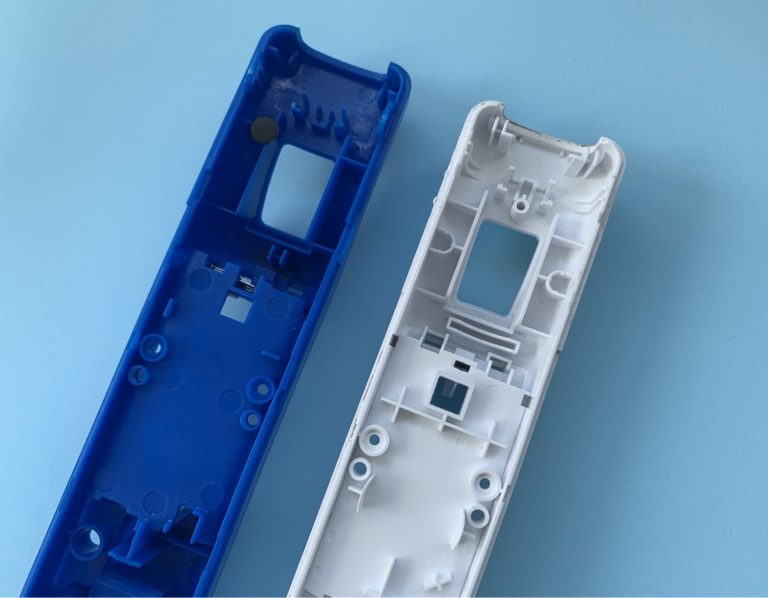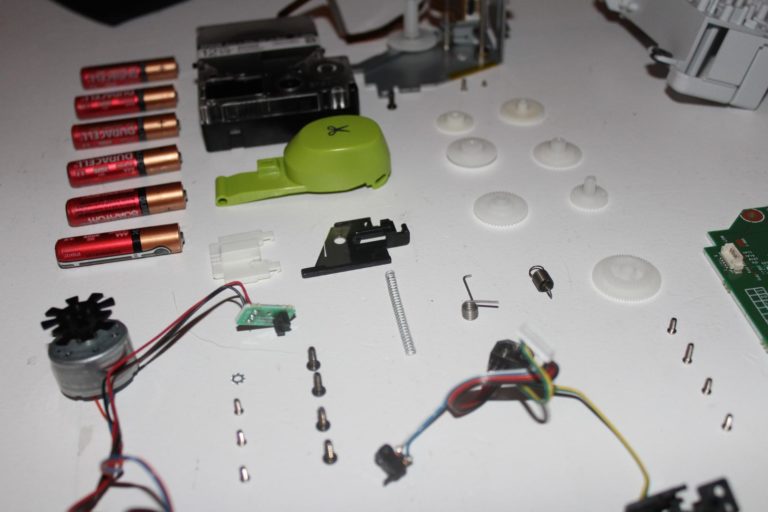At Fictiv, we’re seeking to uncover, decodify, and share how physical products are made — what we like to call the DNA of hardware development. As part of that mission (and our hardware geekery) we’re starting a new teardown series to reveal in a more tangible way the magic behind a wide variety of amazing hardware products.
For our second teardown (check-out our BB-8 teardown if you missed it), we’re taking a look at the iconic Beats Pill speaker.
We think it’s going to be pretty interesting to look beneath the shell of this popular product created by the massive Beats brand to see what makes it tick, on both design and engineering fronts.
Let’s dive in!
Disassembly (for days)
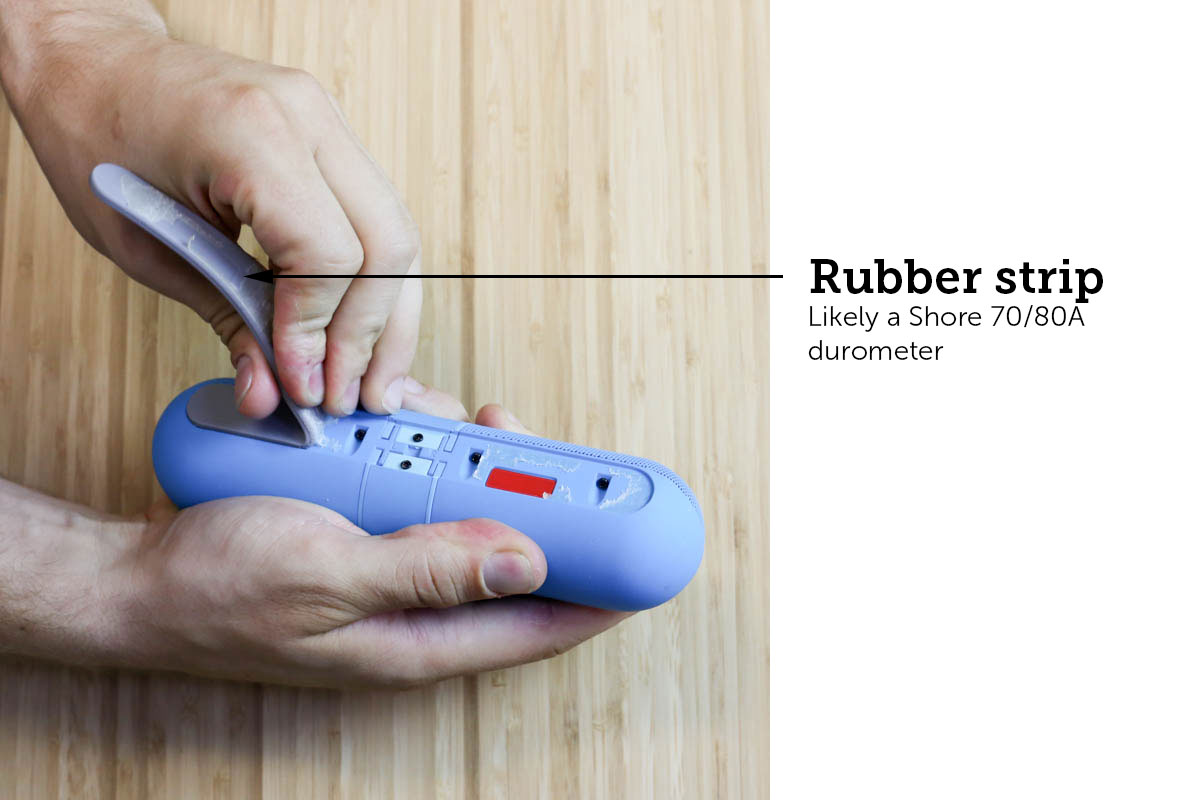
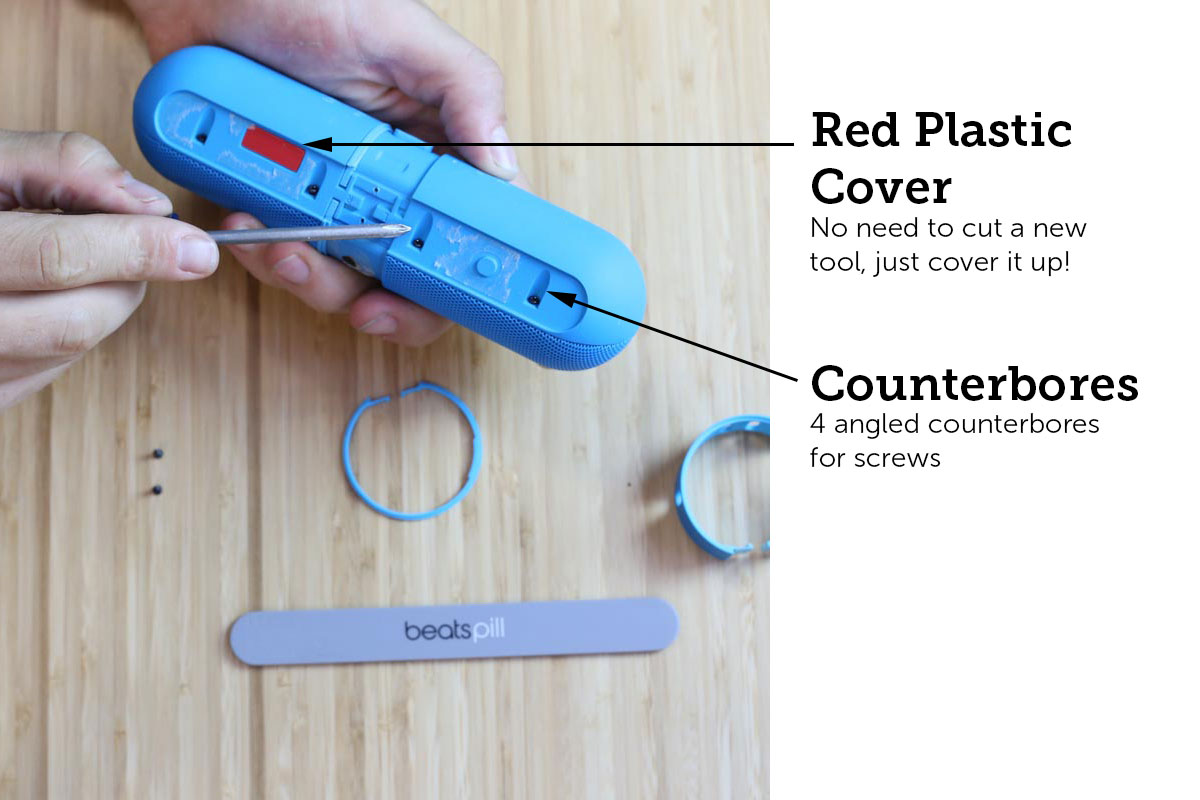
The first thing to do is take off the bottom grey rubber strip — it appears to be a Shore 70 or 80 durometer silicone pad, most likely compression molded based on the parting line. Underneath, of course, we find all the conspicuously hidden screws that hold the main clamshell together.
The first thing that’s noticeable after removing the rubber strip is the angle counterbores. The angle of the 4 counterbores gives us insight into how the clamshell was molded and the angle of the action that the rubber strip hid. But man oh man, despite these intentional grooves, it’s still a tight fit to get these little screws out!
Notice anything that looks out of place? Yeah it’s a random red strip! Taking it off, it appears to be used solely to cover an unused hole in the plastic mold. We assume this was a last minute change and Beats couldn’t afford (time + cost) to cut a new tool.
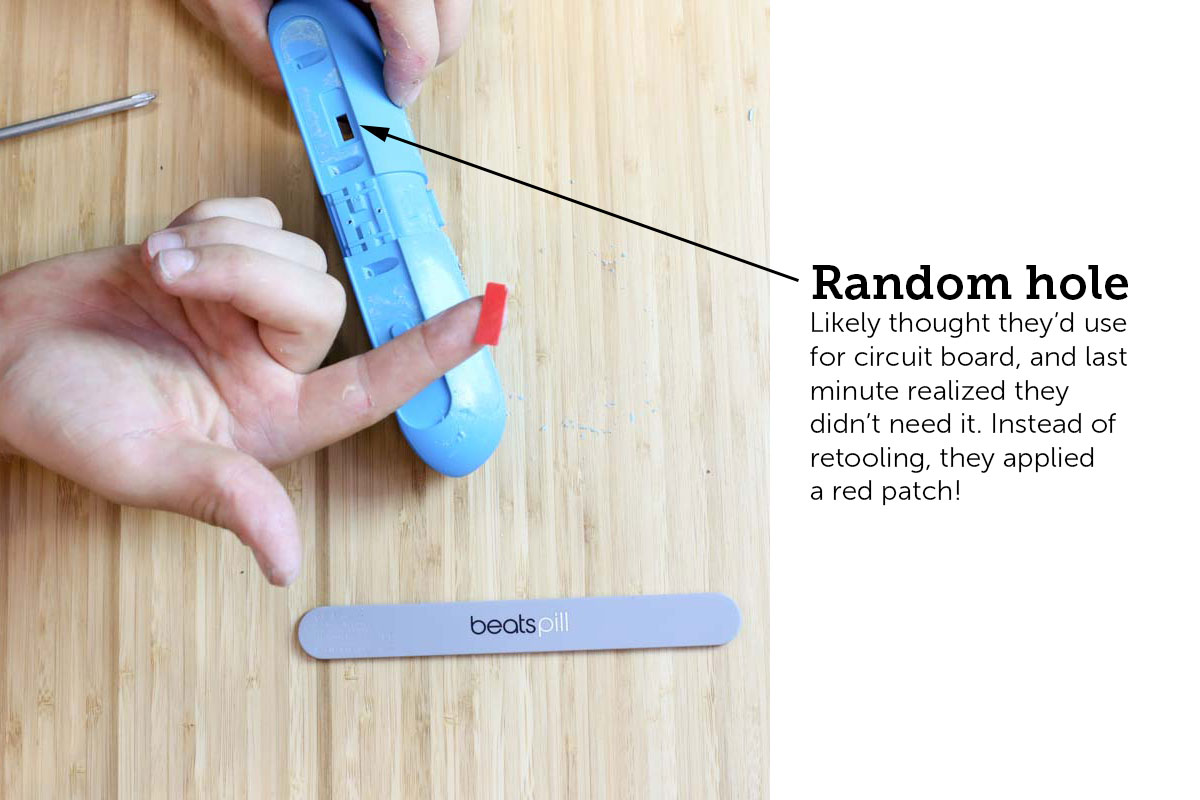
They probably designed a port here in the tooling thinking it would be used for a circuit board and then at the last minute realized they didn’t need it. So instead of retooling, they just used this super fancy piece of red tape to cover it up. Presto!
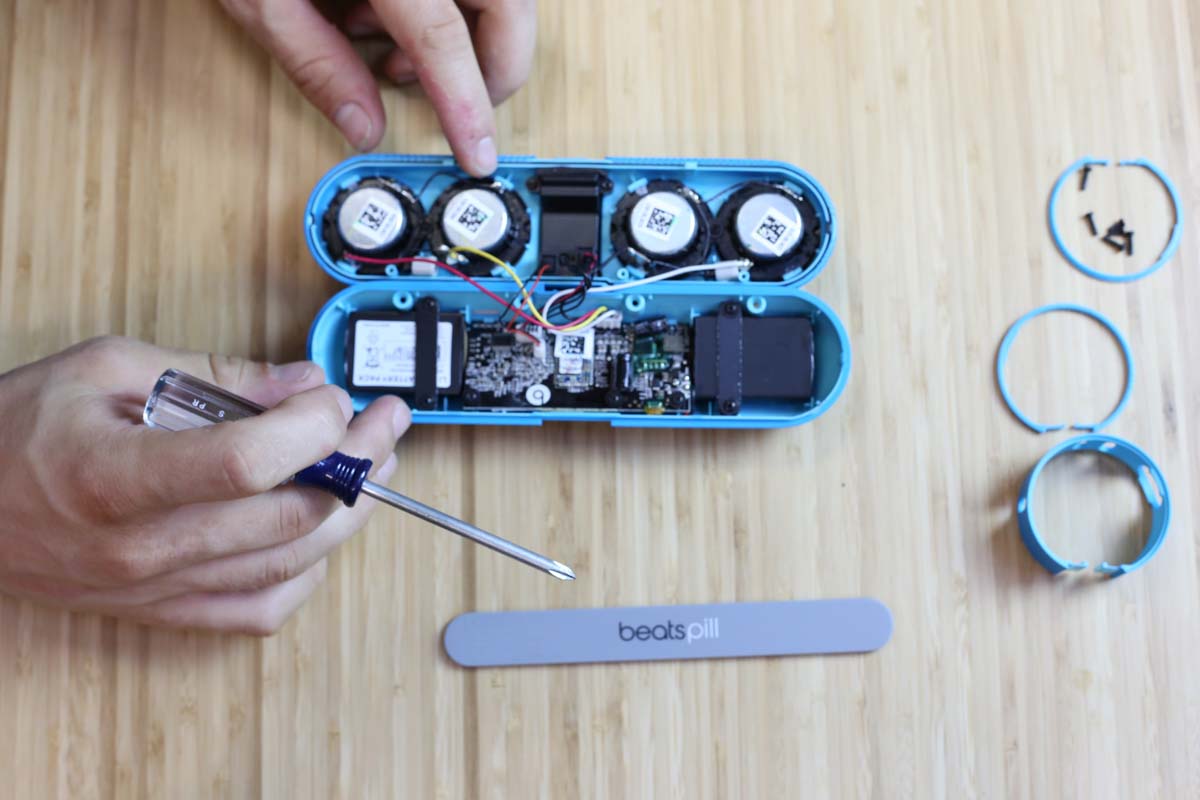
On the inside, the first thing we notice is the amount of assembly required — there are 4 main speakers, 2 massive LiPo batteries and 1 major PCB + we’ve taken off 6 screws so far and now we see 14 more screws on the inside.
With a speaker product there’s so much vibration going on so there needs to be a ton of these tiny screws to keep everything in place so items don’t rattle around; as such, a significant amount of assembly is required.
Speakers + Breakout Boards
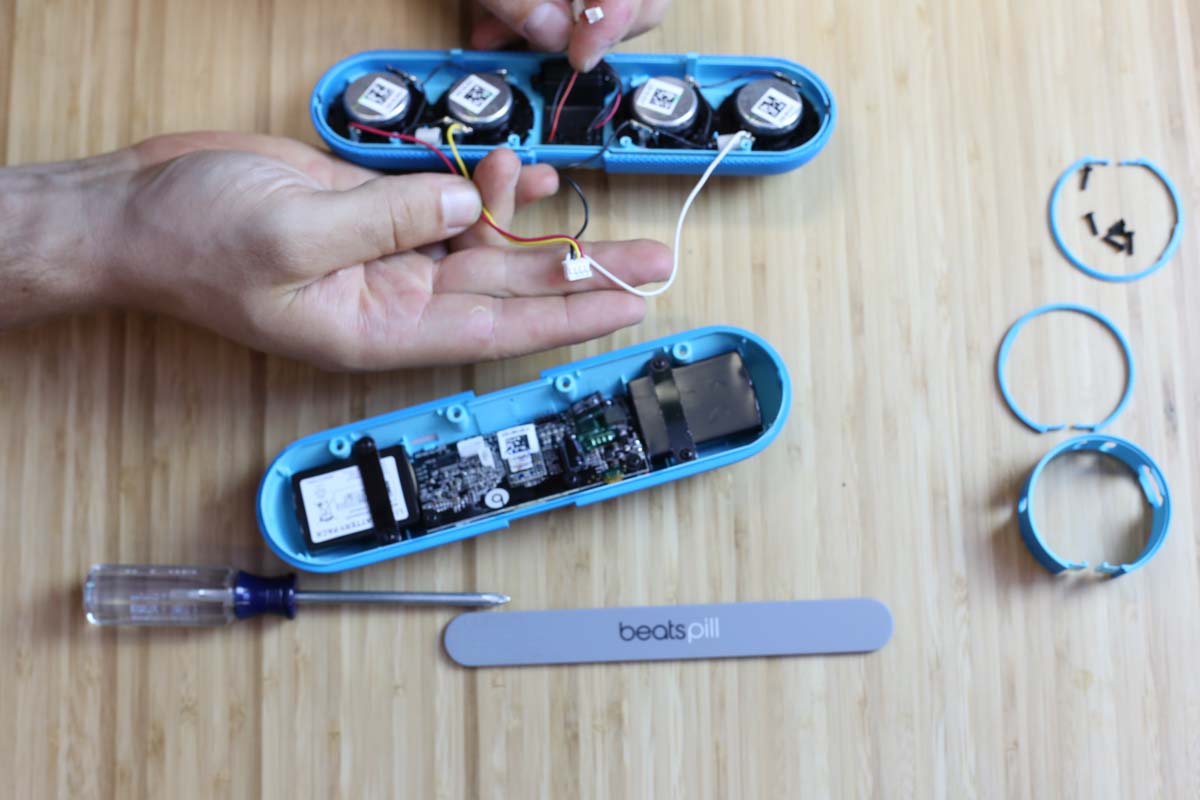
In one half of the casing we see there are 3 jumper cables: 1 major cable going to all the speakers, 1 jumper cable going to a breakout board and then another one that’s powering a separate breakout board. Let’s investigate…
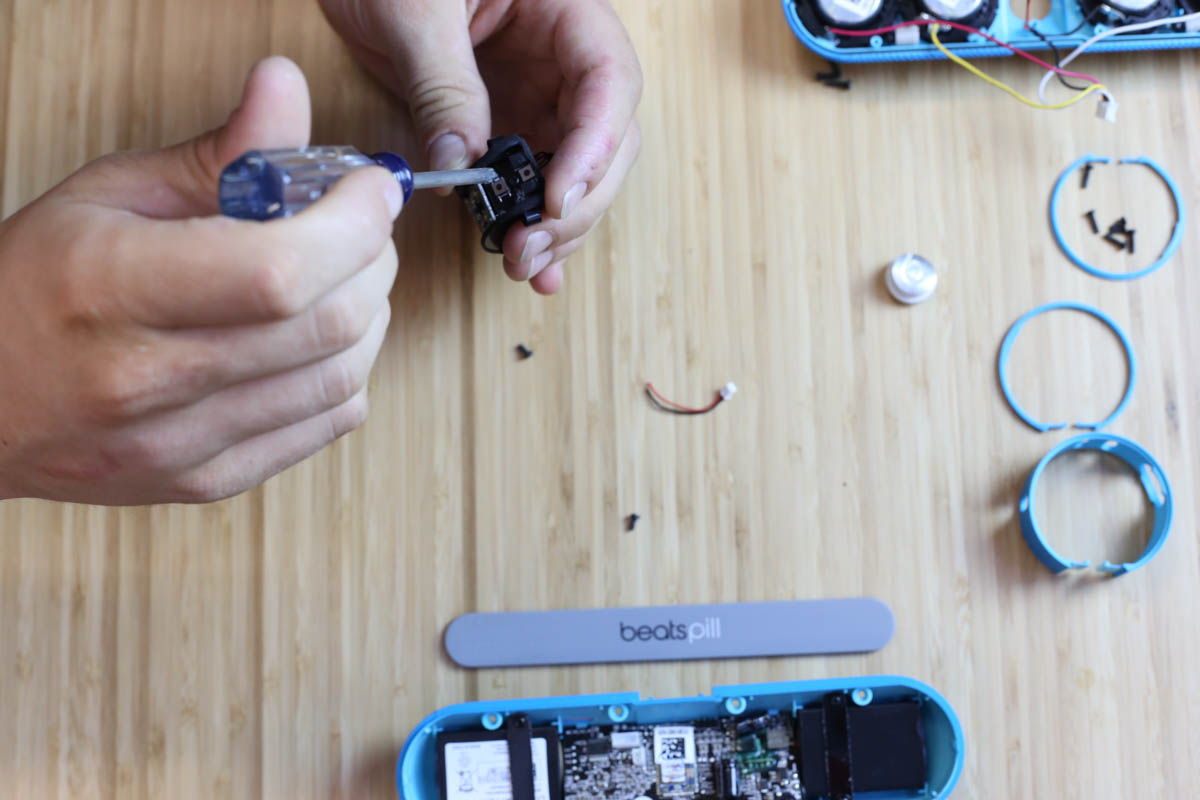
Taking a look at the main breakout board we see the major control buttons: power, LED, and volume. We also notice that the breakout board is hand-soldered, which is pretty interesting but not surprising for a product made overseas where labor is $2/hr.
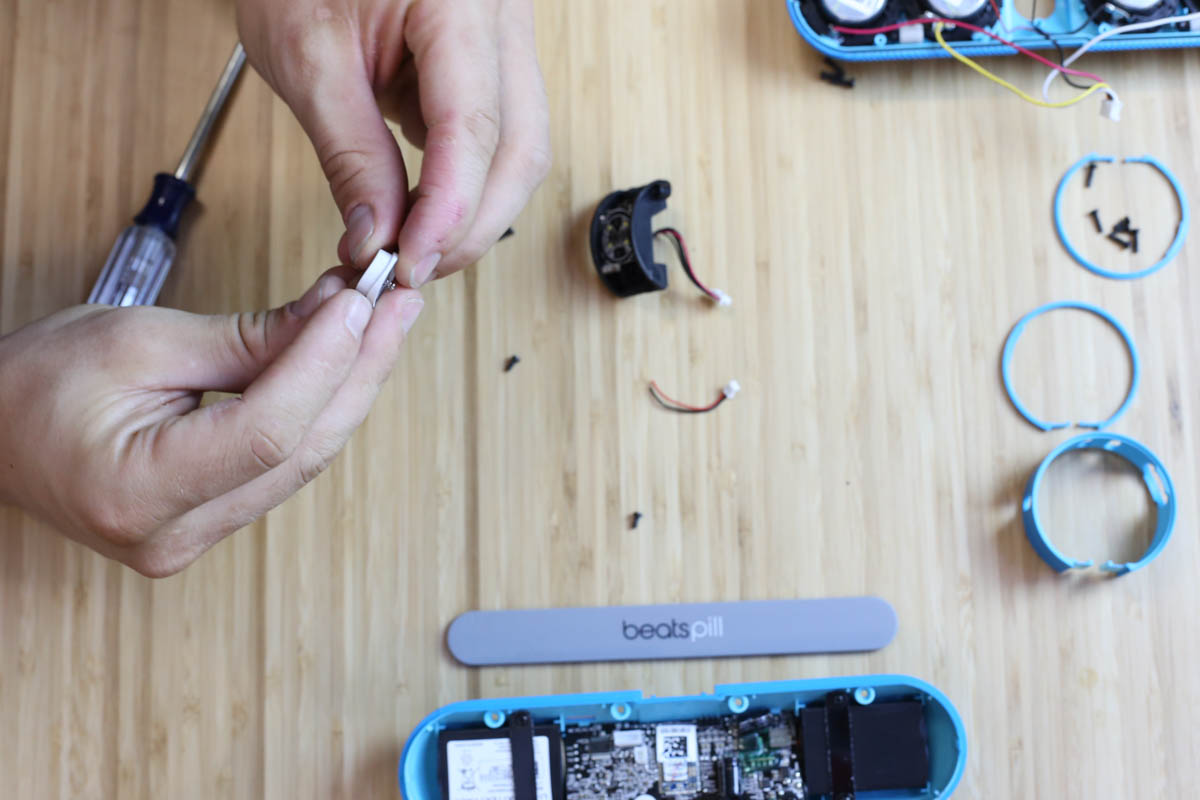
On the other side of the board we have the on-off switch, which is just a generic push button attached to a simple spring mechanism with 4 LEDs to illuminate it.
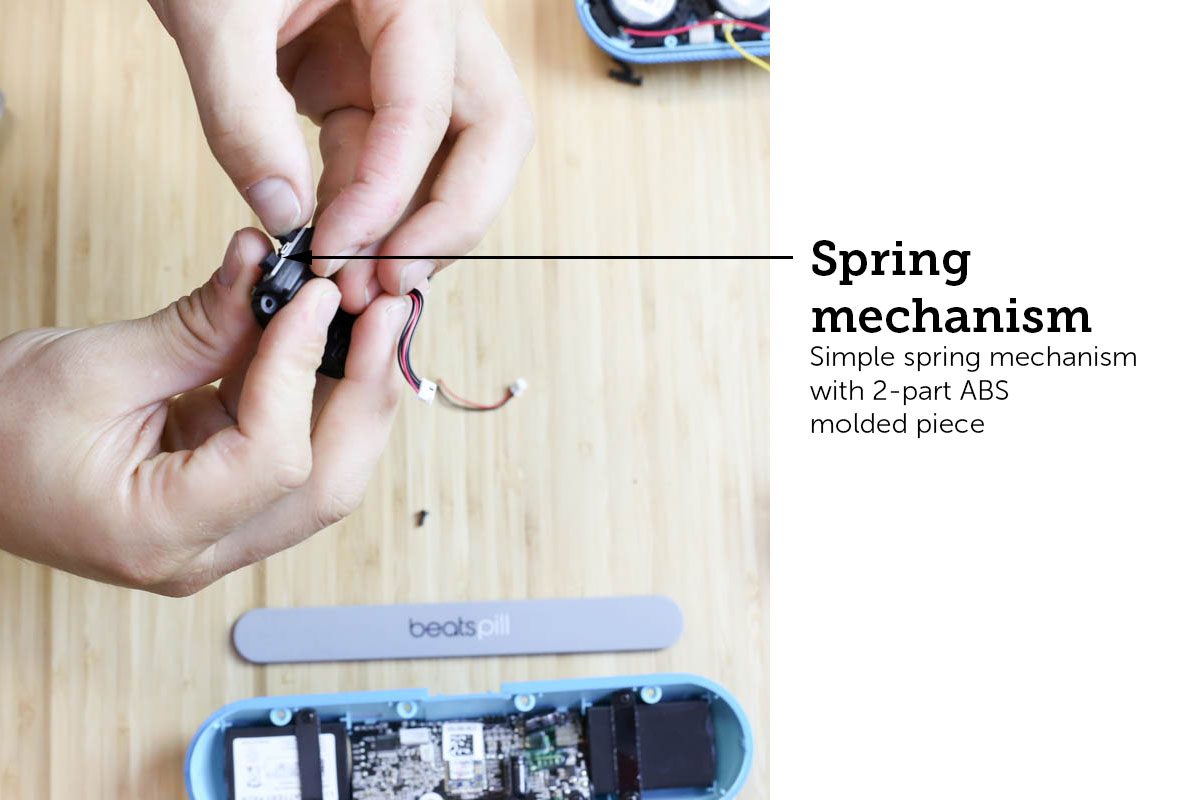
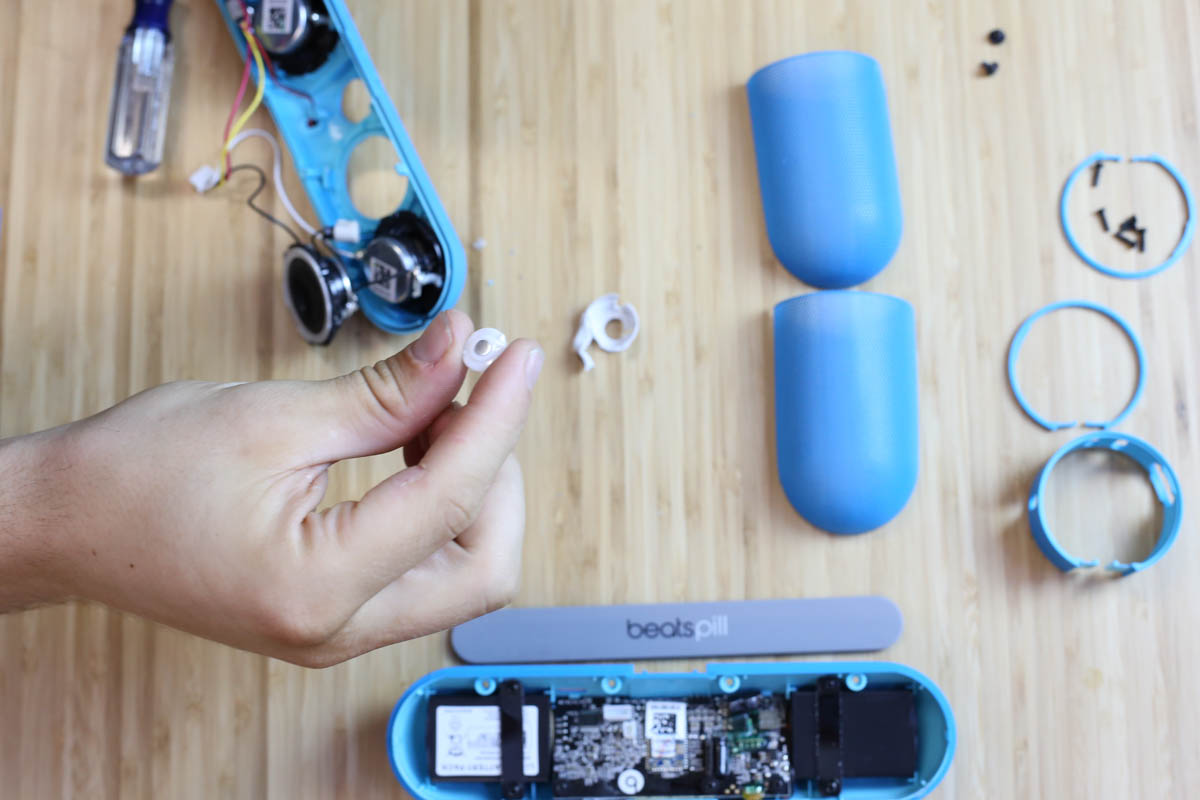
We can tell the plastic surrounding the button is an ABS plastic that’s an opaque white color and then the button itself is a transparent material so the LEDs shine through. Our first light pipe!
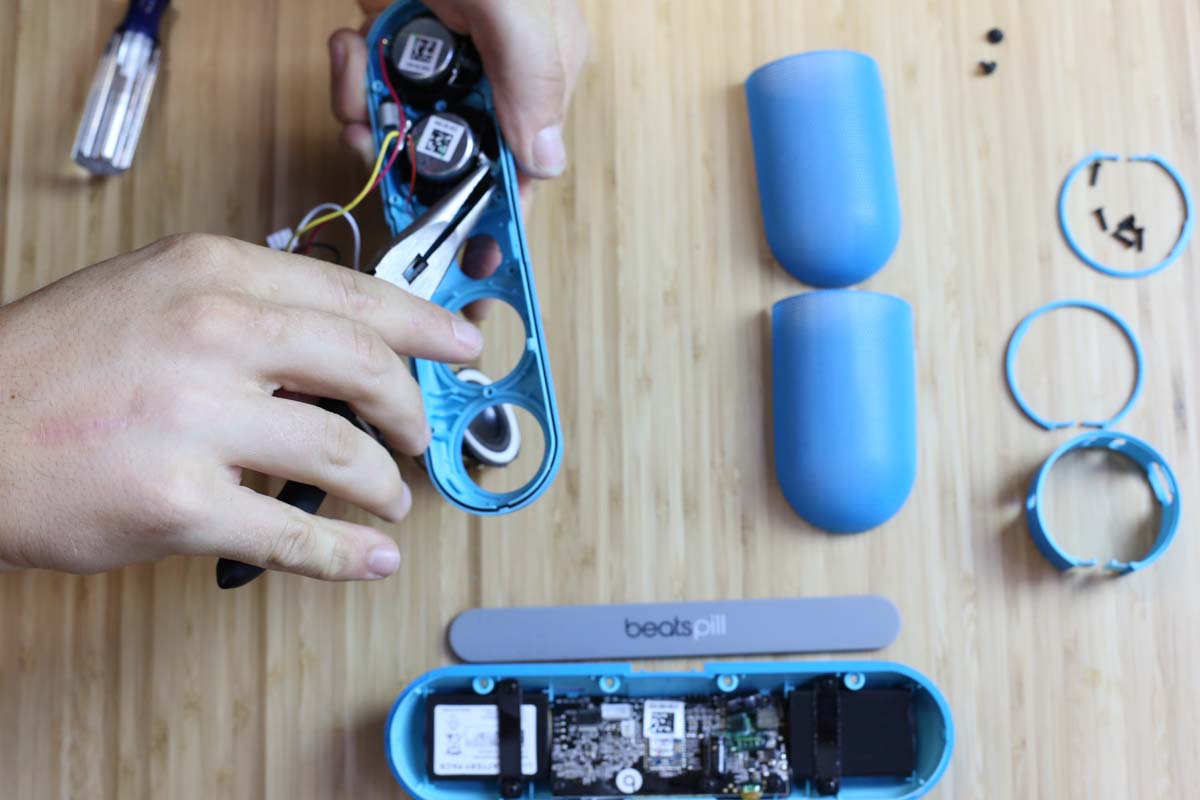
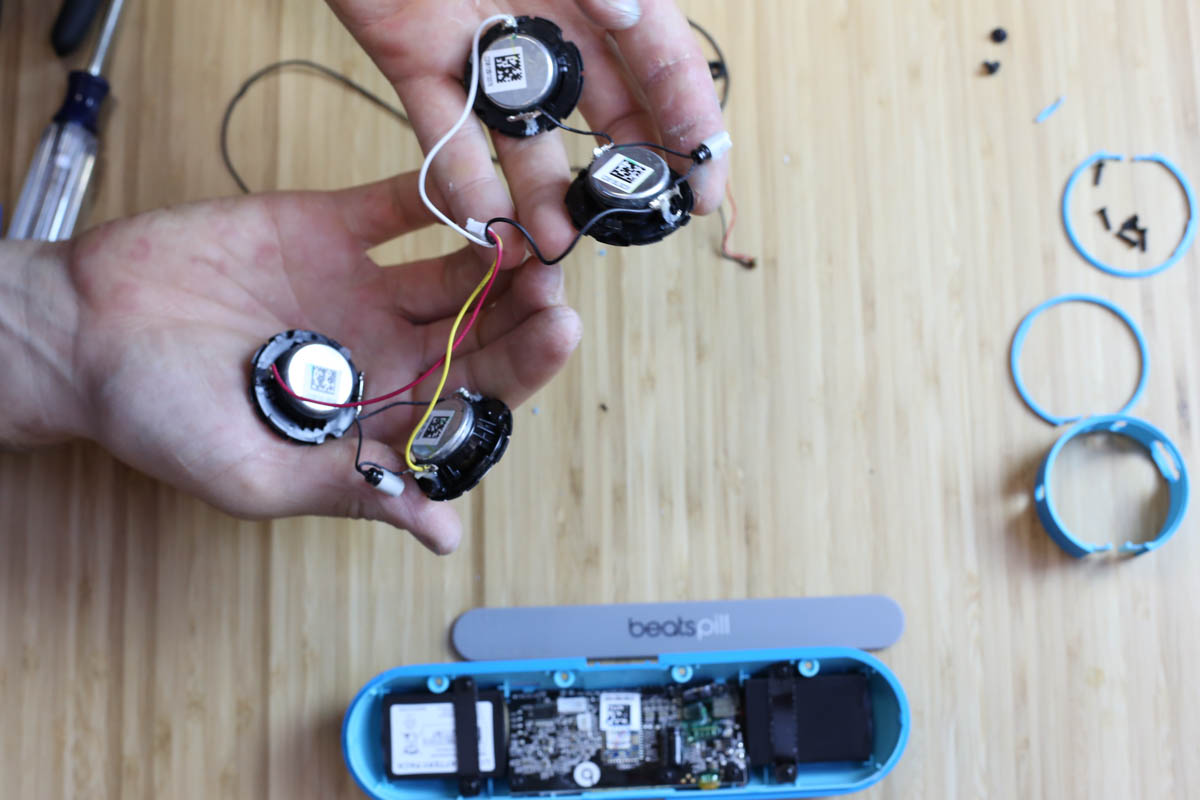
Taking the speakers out isn’t easy — there are 2 snap fits that hold them in on 2 edges in addition to 1 boss in the middle to screw both speakers down.
On the back of the speakers we see the QR codes as well as capacitors in between the grounds, which help to reduce unwanted noise and were probably designed and tested specifically for the Beats Pill.
Batteries + Circuit Board
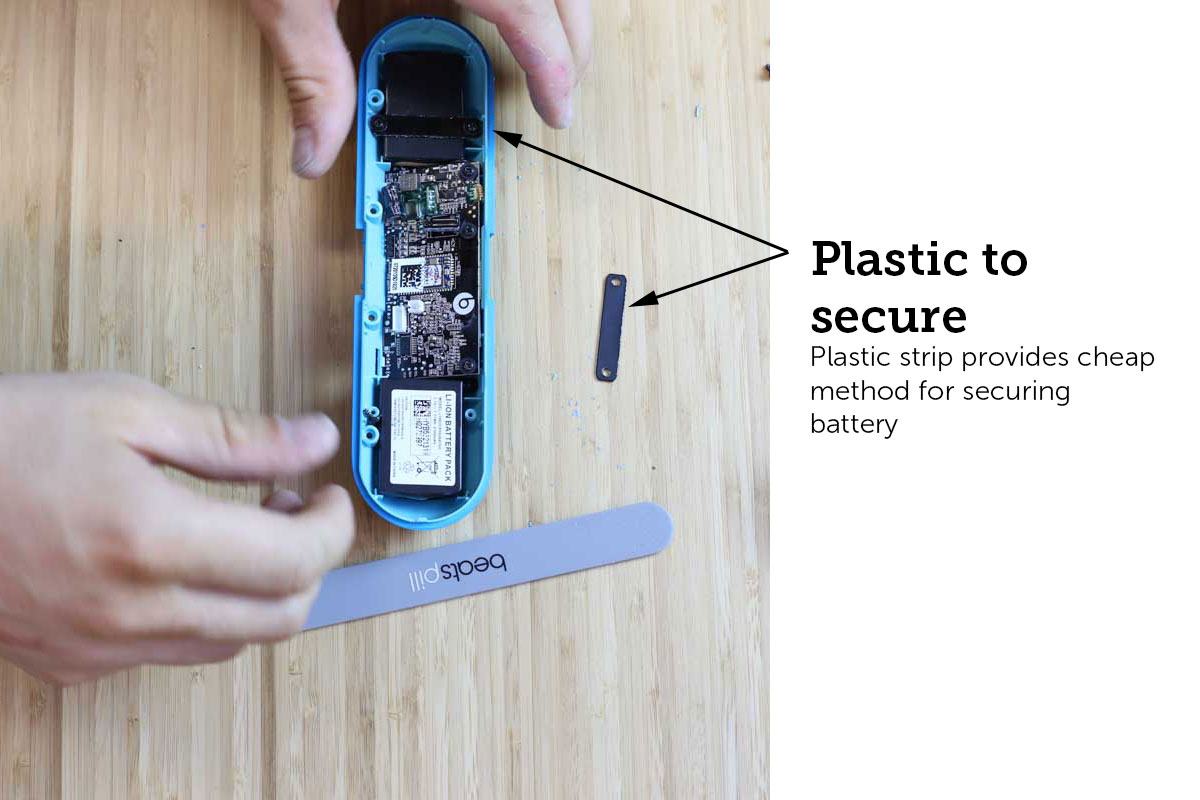
On the other side, we see the 2 batteries and a piece of laser cut or stamped plastic over top as a really cheap way to secure them. The batteries are good to have since they add some weight, which in consumer electronics equates to quality.
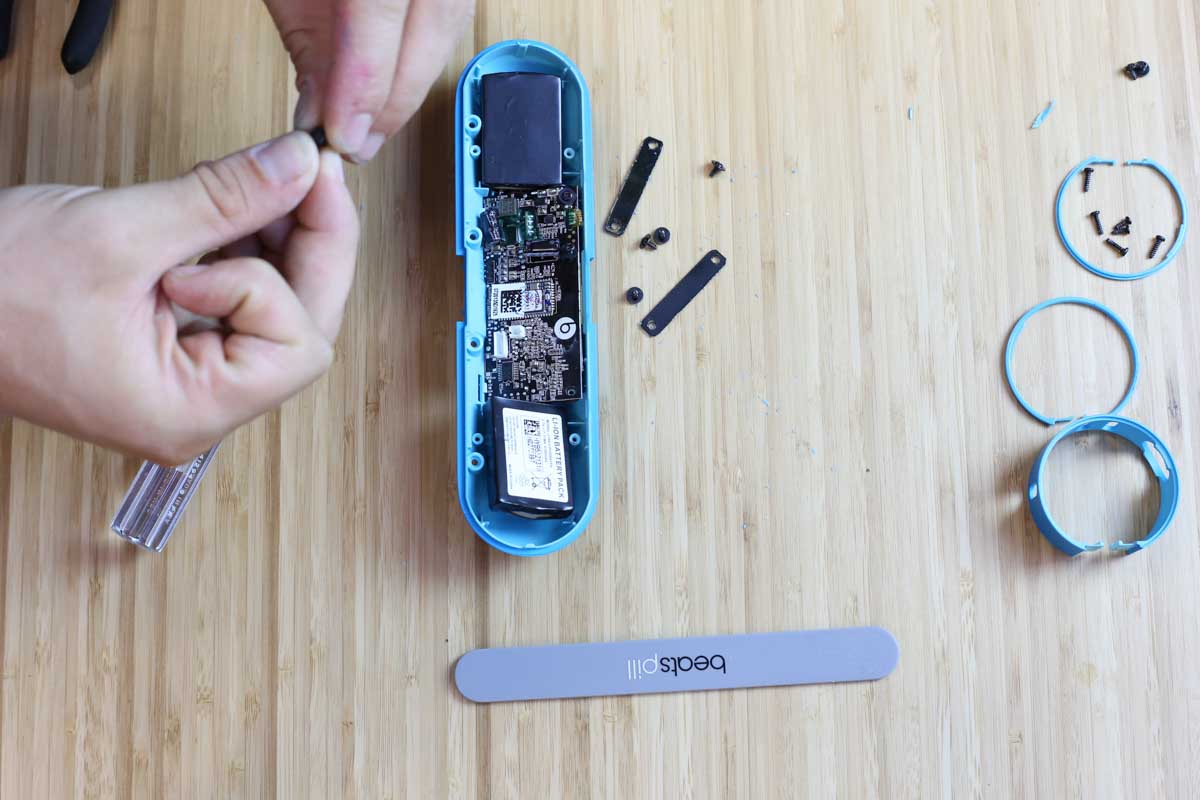
We notice that all the screws on the main circuit board have these little custom rubber pieces attached at an angle; it appears that without them, the screws wouldn’t sit flush on the circuit board for proper assembly. This not only adds to the BOM, but also the assembly time.
Just thinking about assembly again, you’d have to take each screw, put it in that little rubber hole and then screw it down…3 times. So much assembly!
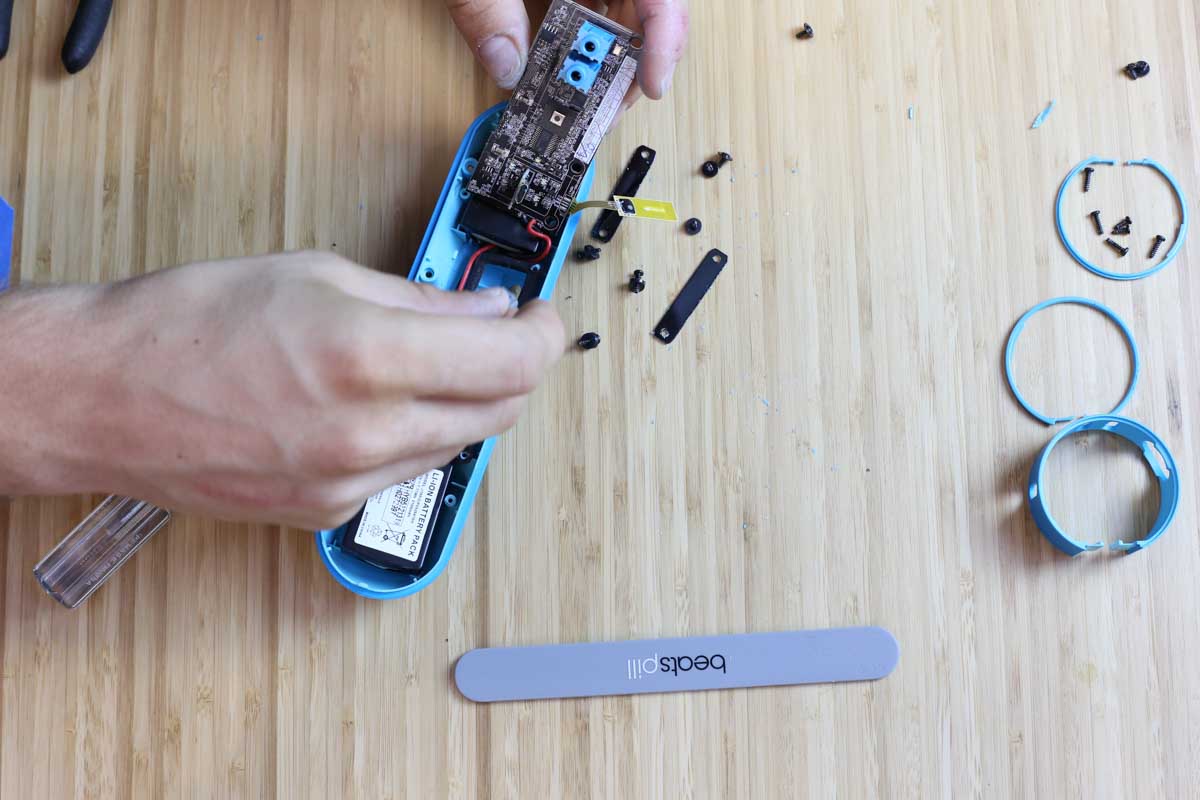
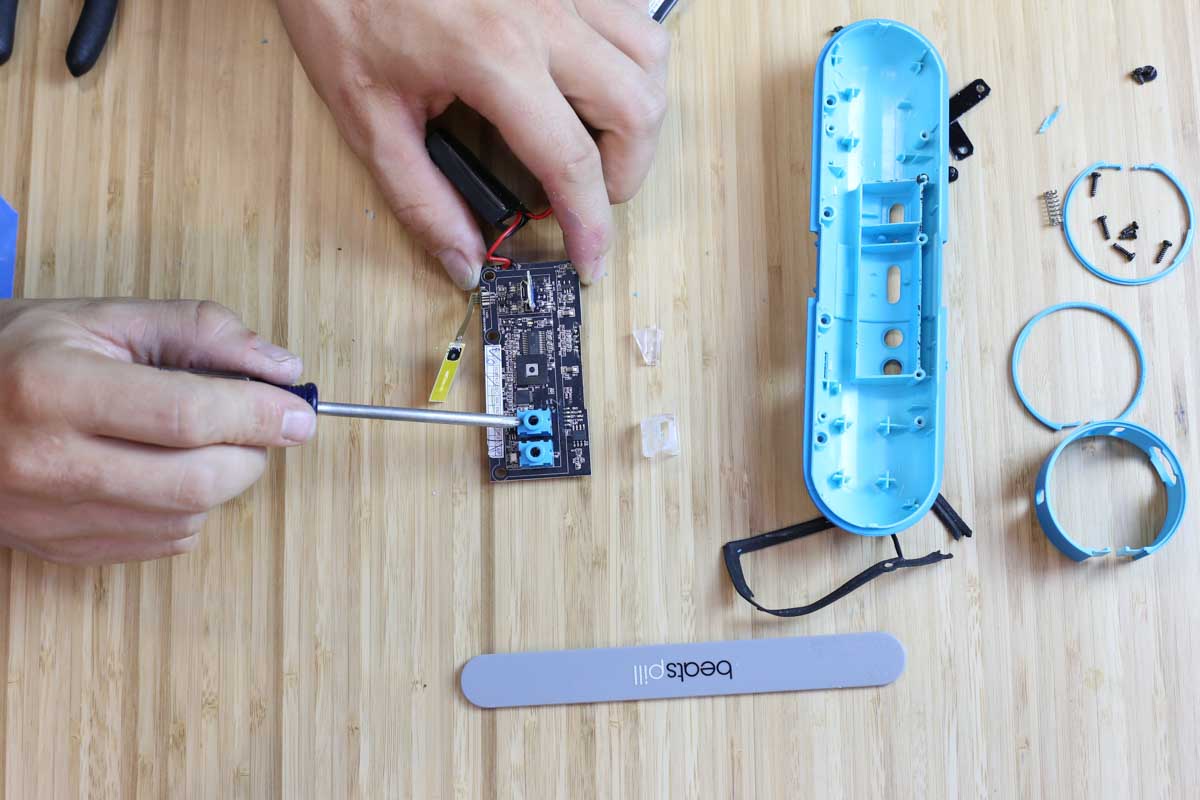
Lifting up the circuit board we see a yellow NFC tag, another push button with a spring mechanism, and a USB connector.
With the perpendicular USB connector, we see that the critical dimensions are the height of the 3mm plugins and this USB connector. Proper tolerance stacking here and manufacturing specs would have been required for the PCB assembly. Surrounding the USB there are also 8 LEDs and a light pipe to help direct the light so the USB glows. The light pipe uses a clear, PMMA plastic and there would have been a lot of engineering done here to make sure the light reflects in just the right direction.
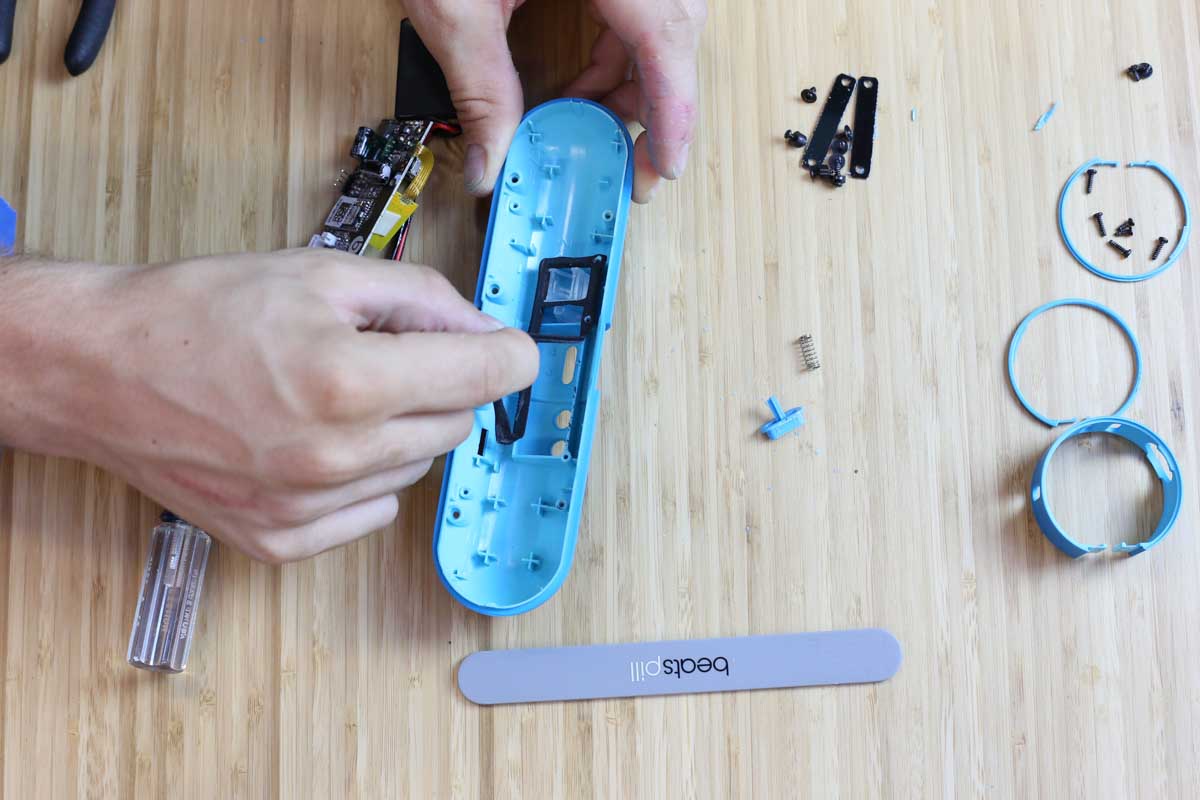
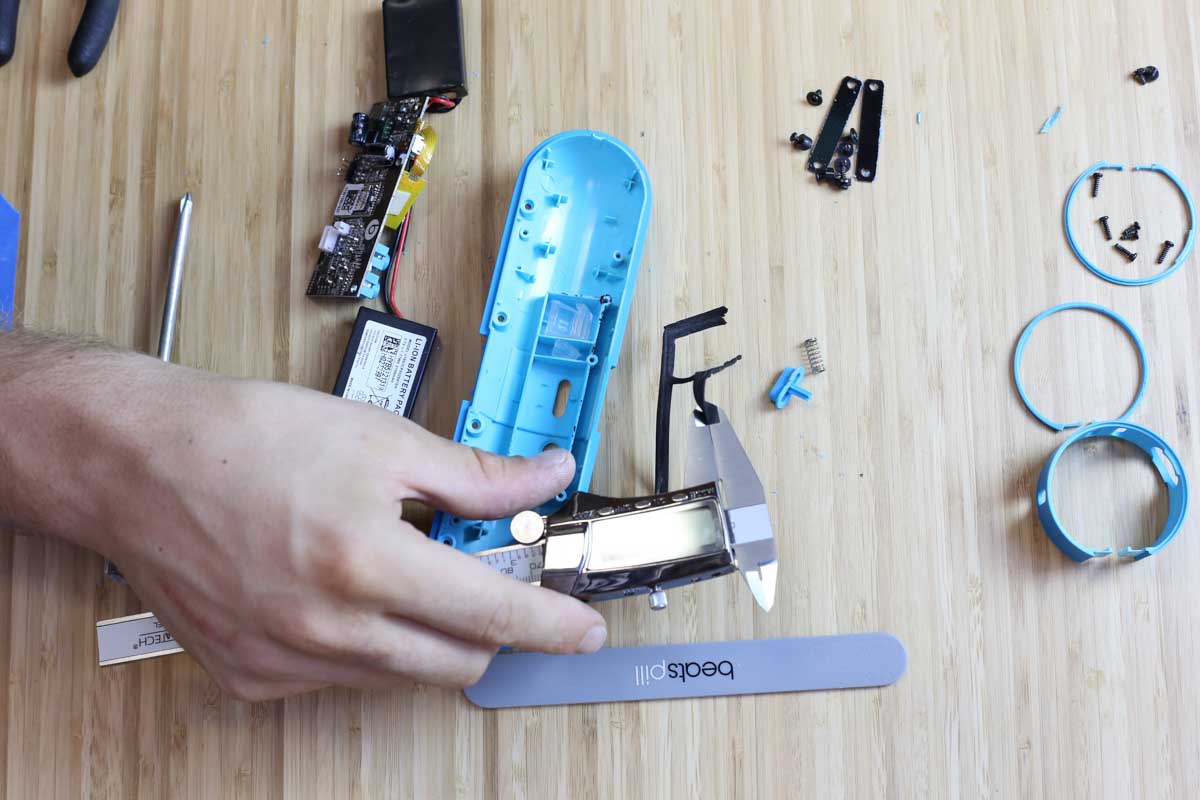
There’s also this interesting thin foam, about .2mm thick, which we assume is used to help dampen vibration inside the speaker.
Plastic Casing Design + Color
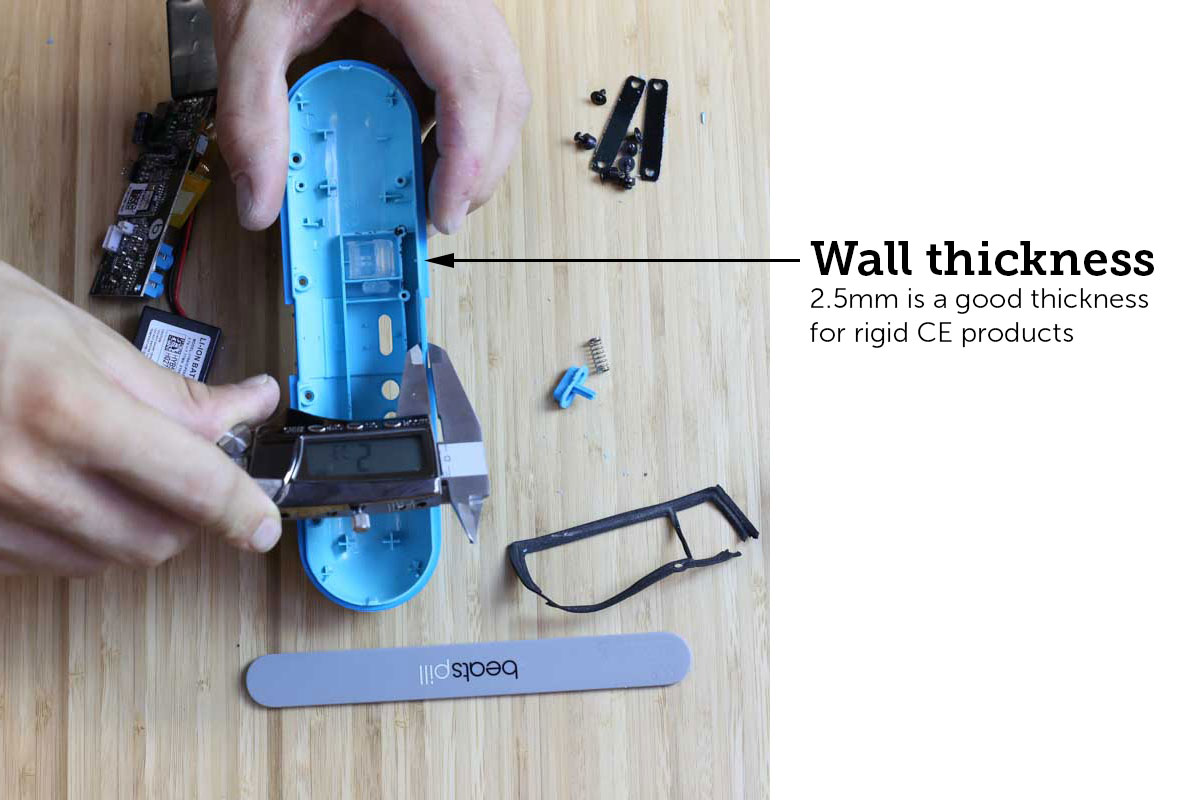
The plastic casing is a pretty simple 2-part mold with a single action. The wall thickness is about 2.5mm and feels quite rigid, so we’d say this is a good wall thickness for consumer electronic products. Taking notes? 😉
It also has some support ribs on the inside with are ~1mm thick, which add additional rigidity without leaving sink marks.
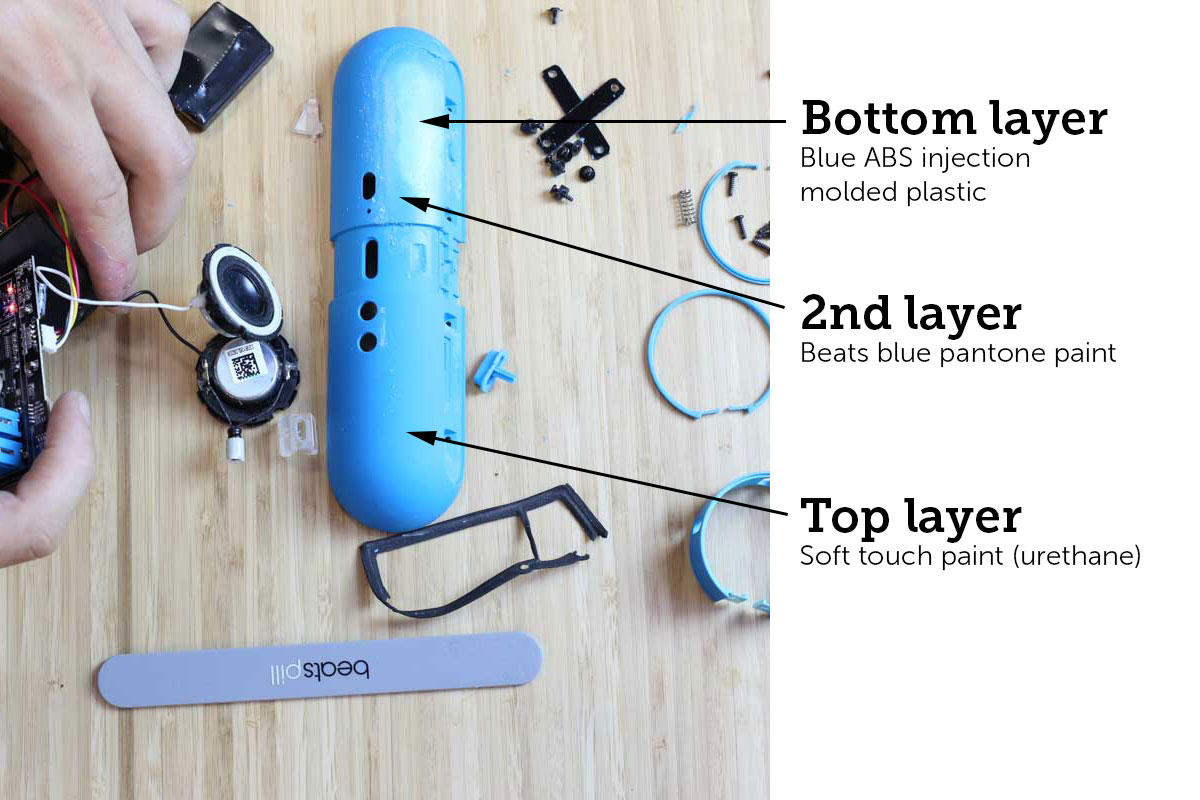
It’s also really interesting to note the execution of this vibrant blue color. Beats is a company that is very design-sensitive; brand value and marketing is everything to them. So we imagine that in designing this particular product, getting this blue color just right would have been very important and would have really led the design.
So instead of requiring the injection molded plastic to match the exact pantone, which isn’t the best for achieving consistent color, they opted to spray paint it.
Taking some acetone to the casing, we can see that the top layer is a soft touch paint (urethane) and then the base layer is a regular spray paint.
It’s certainly more expensive to spray paint a casing vs integrating color into the mold, but it would have been worth it for Beats since the aesthetic appeal of the product is of the highest priority.
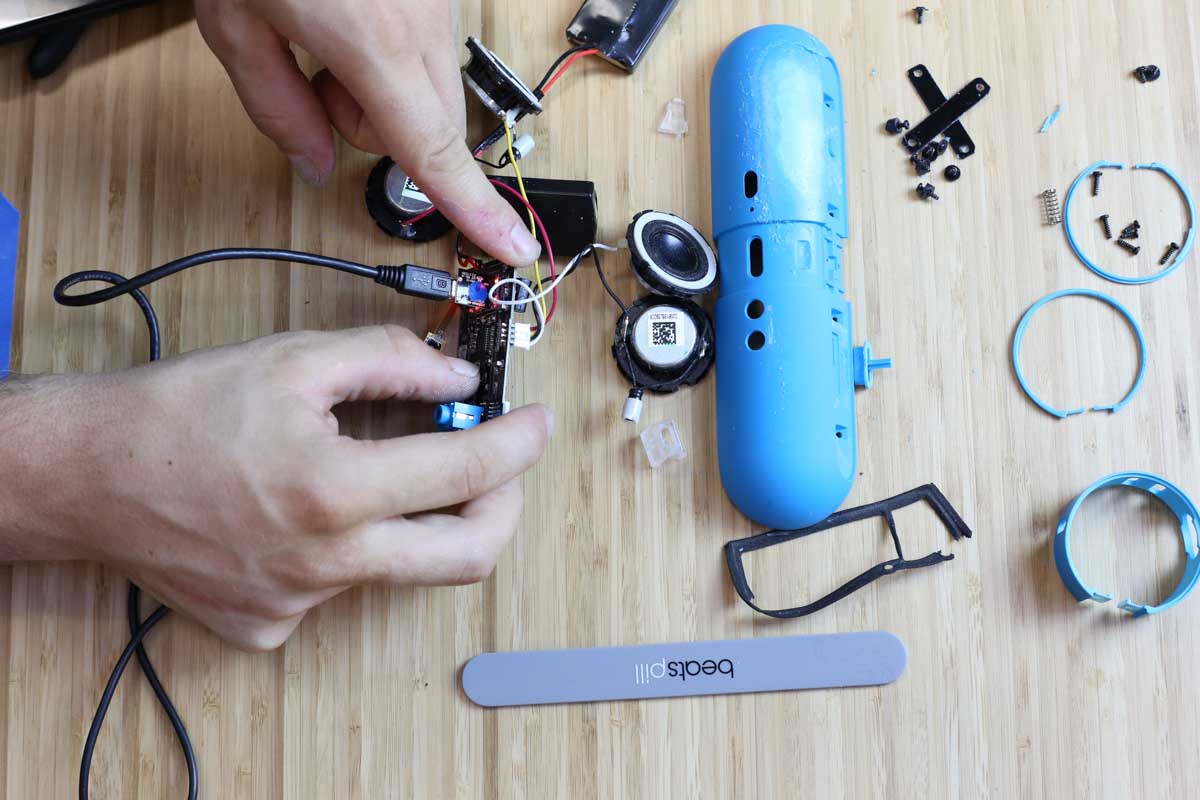
Now that everything’s out of the casing, we’re interested to see what these little speakers sound like away from home. So we threw on a little “Not Butter” and… wow it sounds really terrible! It’s amazing how significantly the housing impacts the acoustics and the resulting sound in this little speaker. Ahh the power of engineering!
Want more teardowns like this one? Subscribe below to get the next one in your inbox.









